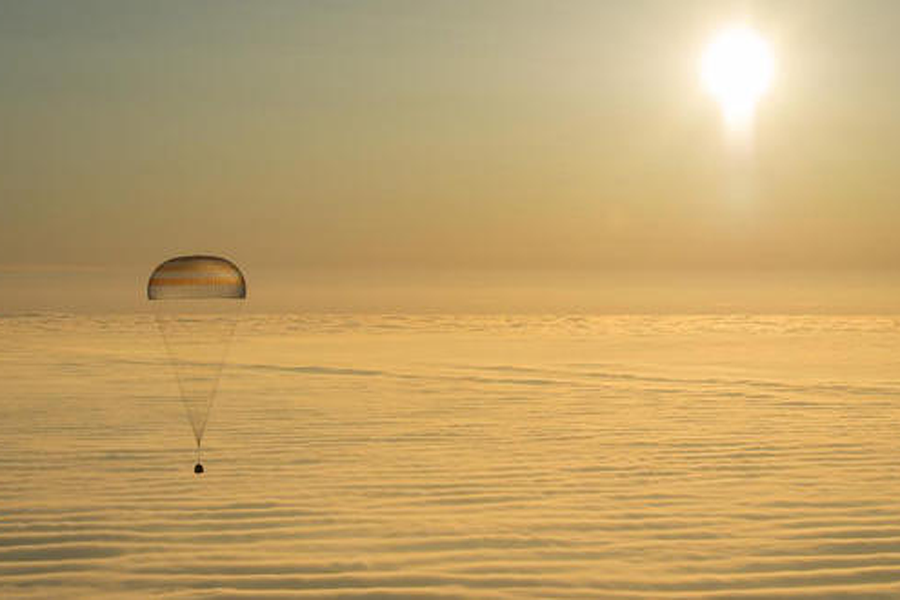After six months in space, a trio of astronauts return home
Loading...
Sen—Three International Space Station (ISS) crew members have safely returned home aboard a Soyuz after almost six months in space performing scientific research and technology demonstrations.
On Mar. 10, Expedition 42 Commander Barry Wilmore of NASA handed over command of the ISS to NASA astronaut Terry Virts.
The crew closed the hatch between the Soyuz TMA-14M spacecraft and the space station at 1934 UTC (03:34 EDT). Expedition 43 officially began aboard the station under Virts’ command at 1144 UTC (6:44 p.m. EDT) Wednesday, when Wilmore and flight engineers Alexander Samokutyaev and Elena Serova of the Russian Federal Space Agency (Roscosmos) undocked their Soyuz spacecraft from the space station.
The three astronauts landed 147 km from the town of Zhezkazgan in Kazakhstan at 0307 UTC (10:07 p.m. EDT 8:07 a.m. March 12 Kazakh time). Their return completes 167 days in space since launching from Kazakhstan on Sept. 26. Their mission covered over 114 million km (71 million miles).
Expedition 42 included research projects focusing on the effects of microgravity on cells, Earth observation, physical science and biological and molecular science. There were also three U.S. spacewalks that took place to prepare the station for future commercial spacecraft.
During their time in space the trio were part of a study to assess the impact of physical body shape and size changes on suit-sizing. This study will involve collecting body measurements using digital still and video imagery and a tape measure to measure length, height, depth, and circumference data for all body segments (i.e., chest, waist, hip, arms, legs, etc.) from astronauts for pre-, post-, and in-flight conditions.
Wilmore has now logged 178 days in space on two flights, the first of which was on space shuttle mission STS-129 in 2009. Samokutyaev has spent 331 days in space on two flights, the first of which was on Expedition 27/28 in 2011. This was Serova’s first flight into space.
Virts and his crewmates Anton Shkaplerov of Roscosmos and Samantha Cristoforetti of ESA (European Space Agency), will operate the station for two weeks until the arrival of NASA astronaut Scott Kelly and Russian cosmonauts Mikhail Kornienko and Gennady Padalka, due to launch from Kazakhstan on Mar. 27.
Padalka will stay in space until September, but Kelly and Kornienko will be the first astronauts undertaking an entire year on the ISS. The pair will stay aboard the station until March 2016, twice as long as a typical mission. Their investigations will study the medical, psychological and biomedical challenges faced by astronauts during long-duration spaceflight.
NASA also has a unique opportunity to conduct studies with identical twin astronauts Scott and Mark Kelly. These investigations will provide broader insight into the subtle effects and changes that may occur in spaceflight as compared to Earth by studying two individuals who have the same genetics, but are in different environments for one year.
Related Links:
More about the International Space Station
Blog: What Russia's next space station might look like
Original story from Sen. © 2015 Sen TV Limited. All rights reserved. This material may not be published, broadcast, rewritten or redistributed. For more space news visit Sen.com and follow @sen on Twitter.





